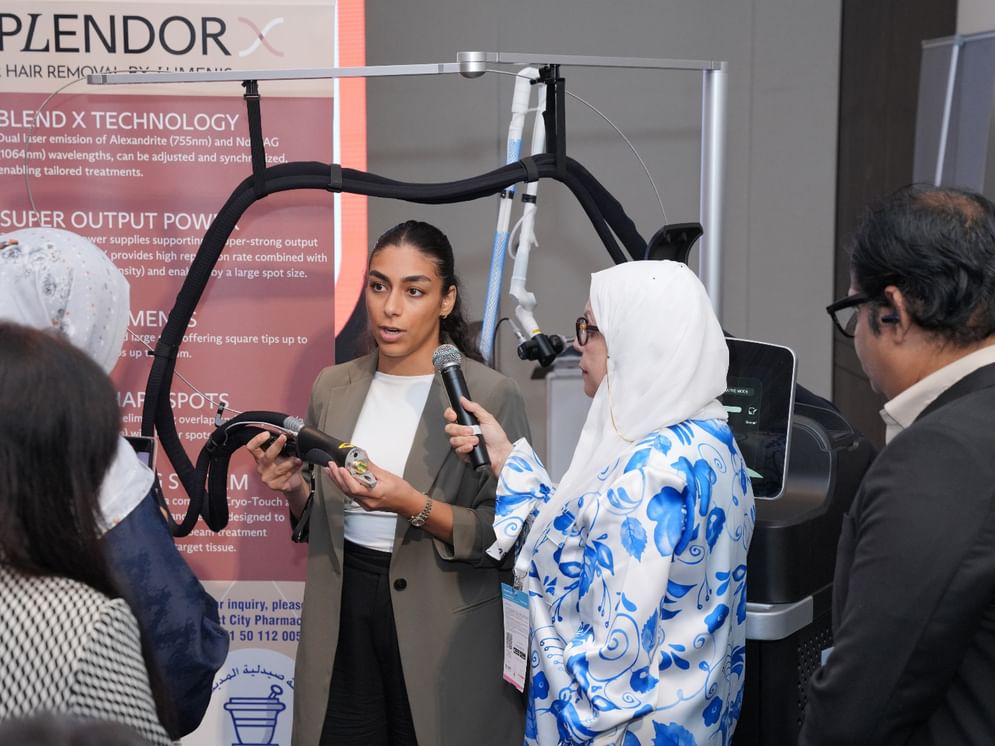Delegates attending the 11th edition of the International Conference in Dermatology and Aesthetics (AIDA) in Abu Dhabi emphasised the significance of ongoing professional development for newly qualified medical practitioners, who aim to acquire additional experience and refine their competencies.
Furthermore, emphasis was placed on the significance of providing support to newly qualified doctors through workshops. These workshops help them familiarise themselves with the most recent developments in medical techniques, practices, and treatment methods.
They further help doctors acquire the skills necessary to use contemporary devices and technologies, thereby ensuring greater precision and safety in the delivery of treatment.
The participants further stressed the vital importance of organising scientific competitions for newly qualified doctors, as they provide doctors with more knowledge and practical experience in the fields of dermatology and aesthetics.
The speakers emphasised the significance of augmenting the use of artificial intelligence in medical and plastic surgical contexts. They highlighted the potential of AI in medical practices to facilitate more intelligent, secure, and dependable treatments.
The conference’s scientific committee said that the discussions during the three-day sessions, which were attended by a group of top dermatology experts and specialists, focused on skin diseases that affect the quality of life of millions of people worldwide. The most common conditions are psoriasis, acne, alopecia areata, and problems with general hair care.
These diseases are not just about how someone looks. They are serious, long-term health problems often linked to the immune system. They need to be treated for a long time, and doctors need a lot of scientific knowledge.
As stated by the conference’s scientific committee, the discussions centred on pigmentation disorders, onychopathies, and, most pertinently, cutaneous malignancies, which have become a significant public health concern in numerous regions. The conference highlighted the necessity for early diagnosis, public awareness, and effective treatment methods for this disease.
The committee also said that the conference focused on important things that medical practitioners need to know and provided an opportunity to review current developments in dermatology, helping to keep up to date with new research and clinical guidelines. It also gave specialists the tools to use this knowledge to look after patients, whether finding rare skin conditions, dealing with complex cases, or picking the best treatment. These sessions help us to make better clinical decisions.
The conference facilitated the exploration of novel therapeutic interventions for various dermatological conditions, encompassing biological therapies for autoimmune skin disorders and innovative delivery mechanisms for conventional medications. The discourse was anchored in empirical evidence, ensuring the relevance of the discussed treatments to actual patient care.
The practical workshops provided valuable opportunities to interact with the latest diagnostic tools, such as ultrasound imaging in dermatology, which is proving increasingly helpful in diagnosing and monitoring skin diseases. It is vital to emphasise the importance of safe injections through proper training. The use of ultrasound-guided injections is now more practical than ever, thanks to the development of fingertip ultrasound. This facilitates the procedure without the need for hands.
The conference further showcased the SibUS™ innovation, a pioneering advancement in ultrasound injection technology for dermatological and aesthetic applications. The system has been developed to assist practitioners in the prevention and management of complications associated with aesthetic procedures. It represents a pioneering development as the first miniaturised ultrasound system designed for aesthetic procedures.
The device is equipped with a digital probe mounted on the fingertip, which facilitates direct imaging of the hand and enables precise control.
Developed by Dr. Asher and an international panel of experts, the FDA-cleared and CE-certified SibUS-In® is lightweight and easy to integrate into daily practice, enabling seamless and effective treatments. The technology provides real-time anatomical insights for safer, more precise treatments and better complication management. The device is ergonomic and ideal for use in curved and complex areas. It can be operated with either hand, allowing consistent access to the desired injection point.
The last day’s sessions were conducted remotely and attended by many specialists and experts in dermatology and aesthetics, and representatives of specialised dermatological, cosmetic, and laser societies from the GCC countries, the Middle East, and international institutions.
–WAM





